Ask Ethan: How does the Universe’s temperature change over time?
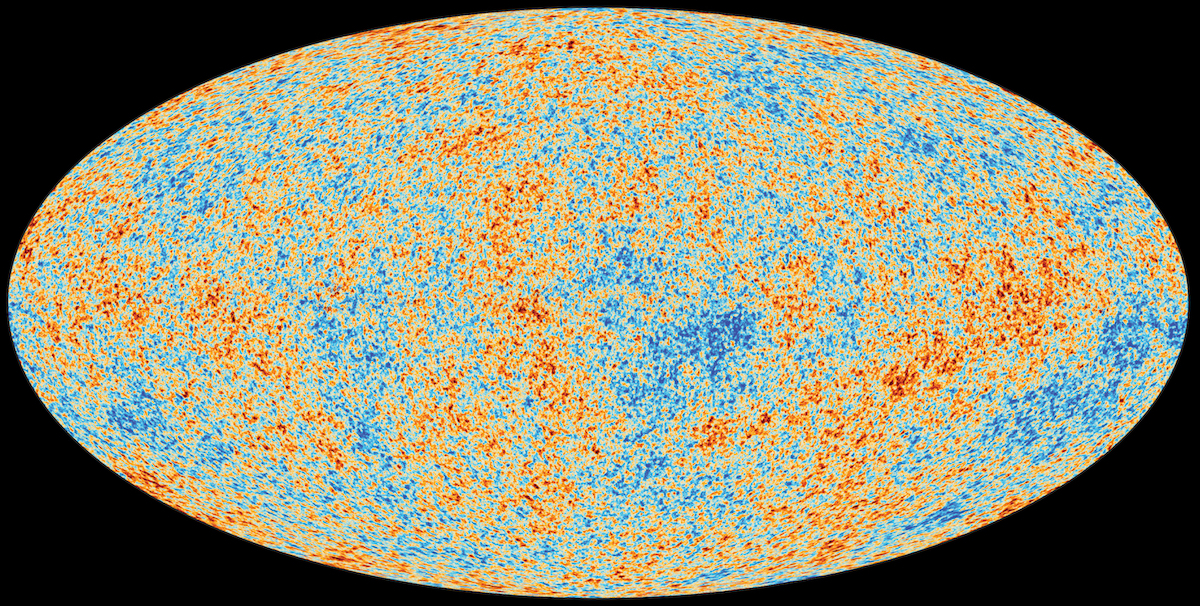
- At the start of the hot Big Bang, the Universe was, well, extremely hot, with temperatures reaching heights that have never been seen since, even in the most extreme astrophysical and laboratory environments.
- By today, however, that initially hot state has cooled off substantially, and the deepest depths of sparse, intergalactic space are now at just 2.73 K, or fewer than 3 degrees above absolute zero.
- The Universe’s temperature has changed with time and continues to change, and there’s a straightforward (but not simple) way to think about how that change occurs. Here’s what everyone should know.
Our Universe, as best as we understand it, hasn’t been the way it appears today forever. While today’s Universe is filled with rich structures like a cosmic web littered with galaxies, each one containing stars, planets, and enormous possibilities for inhabited worlds, if we look back billions of light-years away — and hence, billions of years into the cosmic past — we find that there was once an early time where none of these things yet existed. The Universe, long ago, was more uniform, less clumpy, less evolved, and importantly, smaller in size. The last part is vital to our understanding of space, because it’s an inevitable consequence of the fact that the Universe expands over time.
As the Universe expands, something that’s counterintuitive for many of us, it also cools, as the photons within it not only dilute with increasing volume, but as the wavelengths of individual photons stretch to greater lengths as the space through which they travel expands. It’s why we say our cosmic past didn’t just include a Big Bang, but a hot Big Bang, where not only densities but also temperatures were far in excess of what they are today. That leads to the question of Vir Narain, who simply wants to know:
“What is the relationship, if any, between time and temperature?”
It’s a fascinating question, because although there is a relationship between time and temperature in our cosmic past, it’s not as straightforward as you might imagine. Here’s the science of what’s going on.
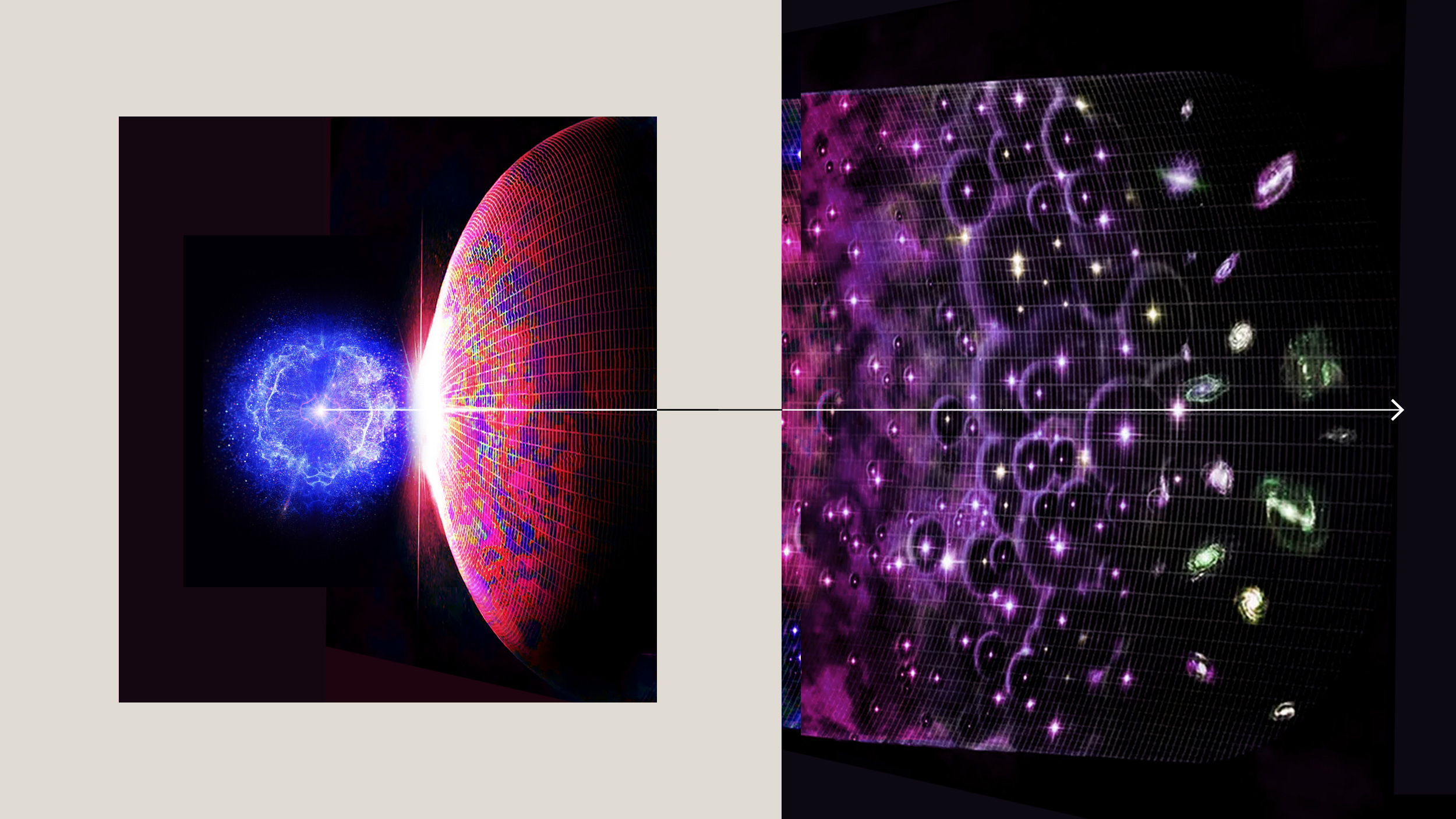
One of the greatest discoveries in the entire 20th century was that of the cosmic microwave background. Back in the 1940s, scientist George Gamow and his collaborators first worked out many of the consequences of a Universe that emerged from a hot, dense, rapidly expanding state: something we identify today as the hot Big Bang. Gamow noted that as the Universe expands, the wavelength of all forms of light within it get stretched by the expanding Universe, lengthening their wavelengths and lowering their energies. As a consequence, he reasoned, if we extrapolated backward, that light must have been at shorter wavelengths, higher energies, and more closely packed together.
In other words, the Universe must have emerged from not only a denser state in the past, but a hotter one. Extrapolate far enough back, Gamow reasoned, and you’d come to a period in cosmic history where there were enough photons of short enough wavelengths that the formation of neutral atoms would have been impossible: where as soon as a proton and an electron found one another and temporarily made a neutral atom, they’d be blasted back apart by one of those high-enough energy (ultraviolet) photons. This would correspond to a state where the entire early Universe was nothing but an ionized plasma: where photons and electrons scattered off of one another copiously, and where neutral atoms could not yet stably form due to the overwhelmingly high temperatures.
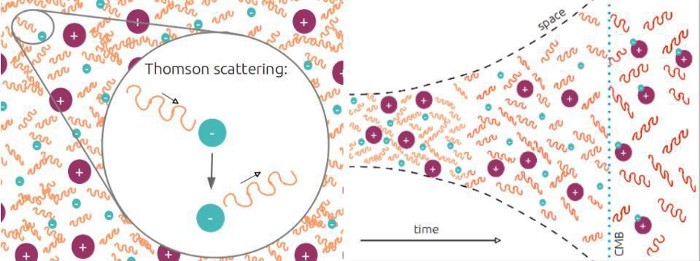
As the Universe expanded and cooled, however, the wavelengths of those critical photons would then lengthen, eventually dropping their energies below the ionization threshold of neutral atoms. Eventually, after enough time had passed, the Universe would become filled with neutral atoms, and those leftover photons — now of too long of a wavelength to ionize the atoms it was encountering — would simply “free-stream,” or travel in a straight line without getting absorbed. As the Universe continued to expand, the wavelength of that light would continue to stretch, bringing it to ever-longer wavelengths and ever-lower temperatures. Eventually, by today, billions of years later, that leftover bath of radiation would be just a few degrees above absolute zero.
Although it was predicted by Gamow as early as 1945, and later details were worked out by Ralph Alpher and Robert Herman in 1948, searches for this background didn’t receive much interest until the 1960s. Bob Dicke and his group at Princeton, including legendary scientists Jim Peebles, Peter Roll, and David Wilkinson, sought to design and fly a radiometer that would look for the (now-microwave wavelength) signature of this leftover glow: now known as the cosmic microwave background but then known, poetically, as the primeval fireball.
However, before they could do so, a serendipitous detection by Arno Penzias and Robert Wilson revealed the presence of this leftover glow of low-energy radiation in all directions in the sky. The cosmic microwave background had just been discovered.

This was the first detection of what’s now regarded as the “smoking gun” signal that eliminated the Big Bang’s competitors. Over time, it was discovered that this radiation was indeed:
- isotropic, or the same in all directions,
- blackbody in nature, exactly as the Big Bang predicted,
- and uniform in temperature to approximately 1-part-in-30,000,
which even today, remain properties of this radiation that no alternative framework can consistently explain. When you add in observations of the expanding Universe, the relative abundance of the light elements, and the observed evolution of galaxies and formation of cosmic structure over time, the Big Bang reigns supreme as our best — and arguably, the only viable — theory of the early Universe.
So if the Big Bang is true, and our Universe is not only expanding and getting less dense, but also cooling as the Universe expands, that implies that it must have indeed been hotter in the past. The relationship between wavelength and temperature is straightforward:
- at half the original wavelength, the temperature is doubled,
- at a third the original wavelength, the temperature is tripled,
- at a quarter the original wavelength, the temperature is quadrupled,
and so on. This is related to time, as the Universe expands with time, but the relationship isn’t exactly direct. Instead, the direct relationship is to the Universe’s size, not its age, as photon wavelengths were:
- half their present wavelength when the Universe was half its present size,
- a third their present wavelength when the Universe was a third its present size,
- a quarter their present wavelength when the Universe was a quarter its present size,
and so on.

This all sounds very theoretical, of course, and so you might wonder if there’s observational evidence that this was actually the case. After all, we’ve measured the cosmic microwave background exquisitely here in the 21st century, and have found that its properties today are that the Universe has a temperature — if we ignore all other sources of matter and radiation like stars, galaxies, gas, dust, plasma, stellar remnants, black holes, and more — that corresponds to 2.7255 K, and where the temperature fluctuations, or deviations from that average value, are only tens-to-hundreds of microkelvin.
But the existence of that radiation, today, doesn’t necessarily imply that this radiation existed, as predicted, at higher temperatures in the past, and at temperatures that correspond to the physical extent of the expanding Universe relative to its extent today.
Fortunately, we have a way to probe precisely this. One of the most ubiquitous molecules in the Universe, perhaps surprisingly, is carbon monoxide, or a simple CO molecule. Because of carbon monoxide’s propensity to have its rotation levels excited at relatively low energies — at energies that correspond to photons of microwave frequencies — it can be used as a cosmic thermometer, where absorption features from carbon monoxide can appear in a distant quasar’s spectrum. As first reported in a 2011 study, the carbon monoxide signature shows, with only very tiny uncertainties, that the temperature of the cosmic microwave background in the distant past really was hotter, and did correlate with the size of the Universe, exactly as predicted.

So if:
- there’s a tremendous bath of low-temperature radiation omnipresent throughout the Universe,
- the Universe has expanded over time throughout its 13.8 billion year cosmic history,
- and the temperature of the Universe depends on its physical size relative to today,
then we’ll be able to calculate how that temperature has evolved over time if we can understand how the physical size of the Universe changes with the passage of time. That’s not necessarily an easy calculation to perform, but thanks to the work of Alexander Friedmann — the man who, perhaps more than coincidentally, happened to be George Gamow’s advisor so long ago — it’s a calculation that we know how to perform.
All the way back in 1922, even before the observational discovery of the expanding Universe, Alexander Friedmann considered the case of a Universe that was uniformly filled with matter, radiation, a cosmological constant, and/or any other form of energy you can imagine, all throughout it, in the context of Einstein’s theory of gravity: general relativity. What Friedmann found was that there was a straightforward and compelling relationship between:
- the total amount of energy density throughout space at any moment in time,
- and the rate at which the Universe’s scale — i.e., the distance between any two points — changed, by either expanding or contracting.
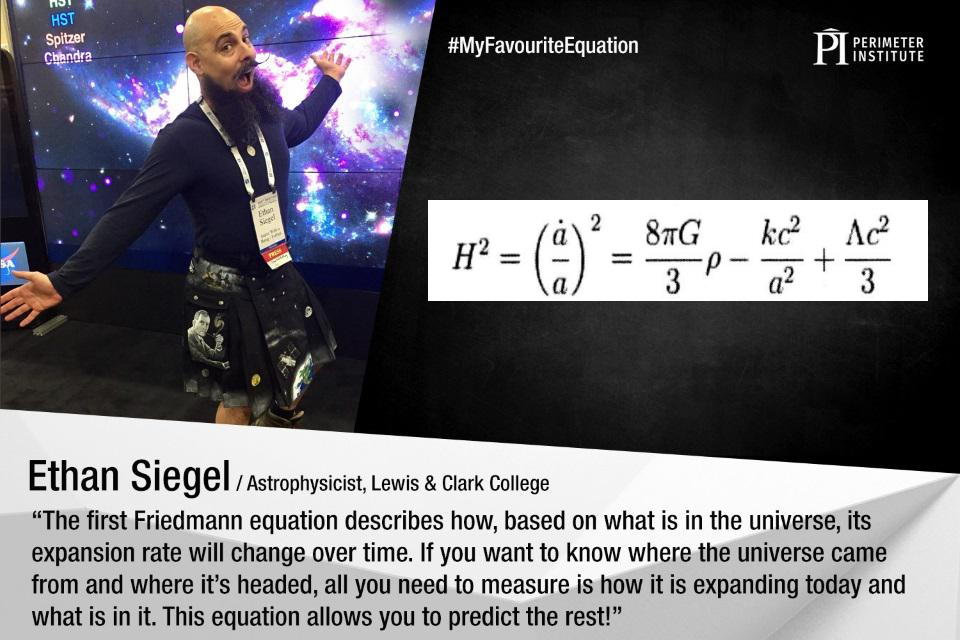
In other words, according to Friedmann, if you knew what the Universe was made out of, and you could measure whether it was expanding or contracting right now as well as the rate at which it was expanding or contracting right now, you could instantly know what the size of the Universe was at any point in cosmic history: past, present, or future.
Well, this is 2024, and we know all of those things. We know that the Universe is made out of about 5% normal matter, 27% dark matter, and 68% dark energy, with a tiny bit of neutrinos (~0.1%) and an even tinier fraction of photons (~0.01%) added in. We also know that the Universe is expanding right now, and despite the controversy over a problem known as the Hubble tension, we know to very high precision how quickly the Universe is actually expanding today.
Based solely on this information, we can calculate back, from the present day, to any moment in the Universe’s past, and learn what the relationship is between temperature and time. It turns out that there are three separate periods in cosmic history that all gradually merge into one another where the relationship between temperature and time are distinct, following different rules at different periods, depending on what form of energy is dominant and primarily responsible for cosmic expansion.

If the Universe were composed only of one type of energy, the relationship between the temperature of the Universe, T, and the amount of time that passes within the Universe, t, would be very easy to calculate. For a Universe that’s 100% made out of:
- radiation, such as photons and relativistic matter (like high-energy neutrinos), the temperature, T, falls off as ~1/t½,
- matter, such as protons, neutrons, electrons, or whatever dark matter is made of, the temperature, T, falls off as ~1/t⅔,
- dark energy, such as a cosmological constant, the zero-point energy of space, or some other form of energy inextricable from the fabric of space itself, the temperature, T, falls off as 1/eHt, where H is the expansion rate at the present moment.
Today, the Universe is dominated by dark energy, but matter — mostly in the form of dark matter — is still important. Earlier on, say about 6 billion years ago, dark energy was less important, and matter was the dominant factor in determining the Universe’s expansion. And in the very early Universe, for about the first ~9000 years after the start of the hot Big Bang, radiation was the dominant factor, with matter being sub-dominant and dark energy being completely negligible.
I’ve created a graph that shows what form(s) of energy are most important throughout cosmic history, and as you can see, below, we go through three main stages.

Early on, radiation, driven by photons and neutrinos, is the dominant factor in the Universe. This period persists from the start of the hot Big Bang for the first few seconds, minutes, hours, days, years, decades, centuries, and millennia. Then, about 9000 years onward, matter begins to take over, becoming the dominant form for millions and even billions of years, all as the Universe continues to expand and wavelengths continue to stretch. Finally, about 6 billion years ago, the matter density became so dilute that dark energy began to become important and now dominates the expansion of the Universe. As the Universe expands — i.e., as the distance between any two points increases — the temperature of the Universe drops proportionally.
This means that the temperature of our Universe, today, at 2.7255 K, was greater in the past. Some fun data points are that when the Universe was an age of:
- 13.8 billion years, T = 2.7255 K,
- 10 billion years, T = 3.62 K,
- 7 billion years, T = 4.77 K,
- 1 billion years, T = 18.12 K,
- 100 million years, T = 83.4 K,
- 10 million years, T = 379 K,
- 1 million years, T = 1633 K,
- 25,000 years, T = 13,700 K,
- 1000 years, T = 73,600 K,
- 1 year, T = 2,370,000 K,
- 1 second, T = 10,000,000,000 K,
- 1 microsecond, T = 10,000,000,000,000 K,
and so on, where every factor of 100 earlier you go in time, the temperature gets ten times hotter.
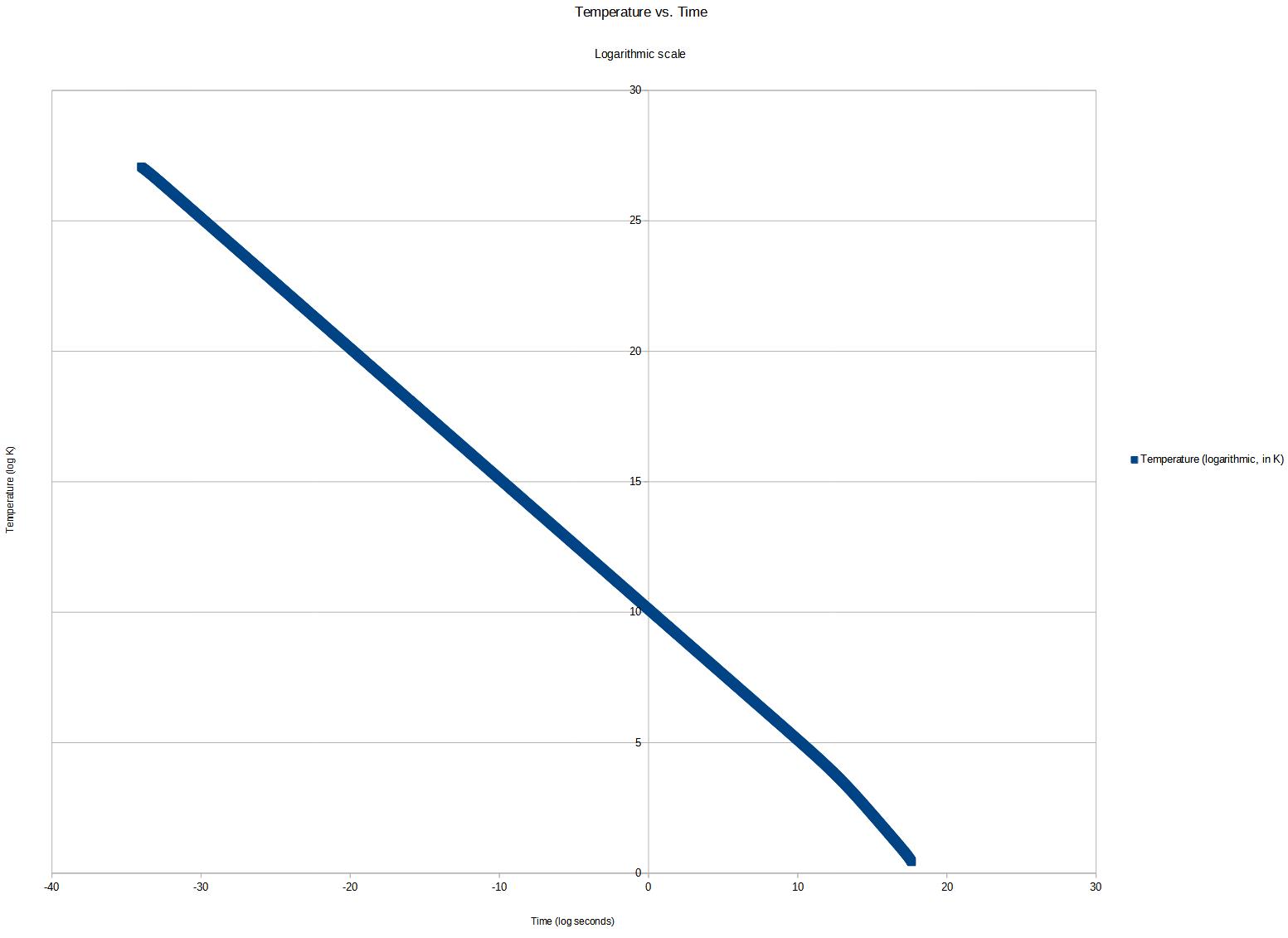
That’s the relationship: the Universe does change in temperature over time, and the temperature of the Universe always drops. Interestingly, you can still have regions of space — such as the interior of the Boomerang Nebula — where the rapid expansion of material can create a location that’s colder than the deepest depths of intergalactic space. These temperatures are achieved in a similar fashion to the low temperatures that the cosmic microwave background eventually gets shifted to: through rapid and relentless expansion. In the case of the Boomerang Nebula, it’s due to the expansion of matter, not the expansion of space, but the same principle, adiabaticity, still applies.
We understand our cosmic history well enough that we can now go back to any epoch in the Universe’s past and know, with only extremely small uncertainties, what the temperature of the Universe was at those early times. We can probe this over an enormous range of conditions, from when the Universe was just a tiny fraction-of-a-second old to when it was many billions of years old, as well as at every stage in between. We can confidently state when such events as electroweak symmetry breaking, hadronization of quarks, Big Bang nucleosynthesis, and the formation of neutral atoms all occurred, because all of these are temperature-dependent processes.
When you ask about the temperature-time relation, you’re asking about the physics that governs the Universe at all times. 100 years ago, answers to these questions would have been purely theoretical; today, we have an overwhelming suite of evidence that supports this picture. That’s quite a success for cosmology, and something that everyone, not merely physicists and astrophysicists all over the world, can appreciate about our understanding of the Universe!
Send in your Ask Ethan questions to startswithabang at gmail dot com!





